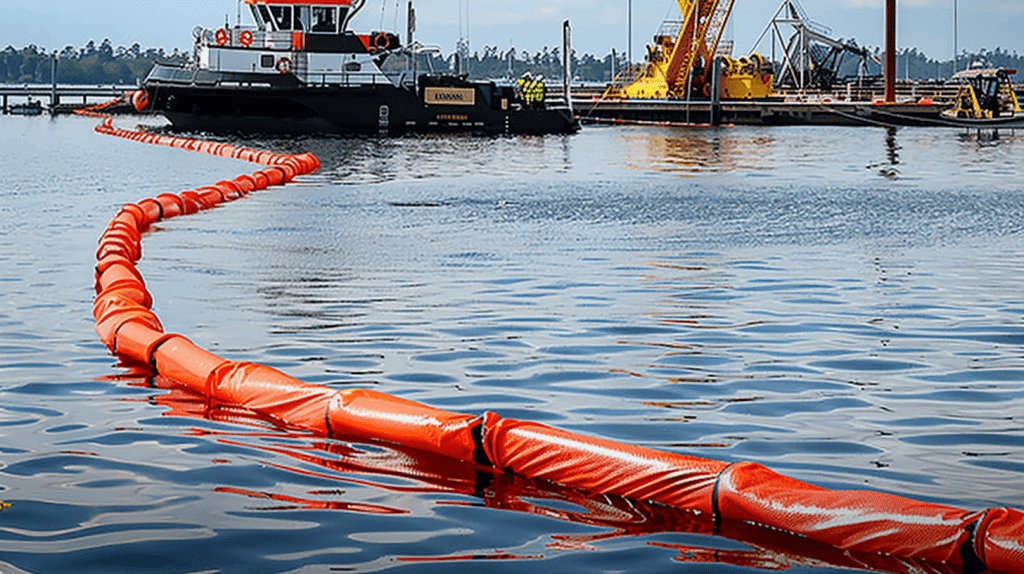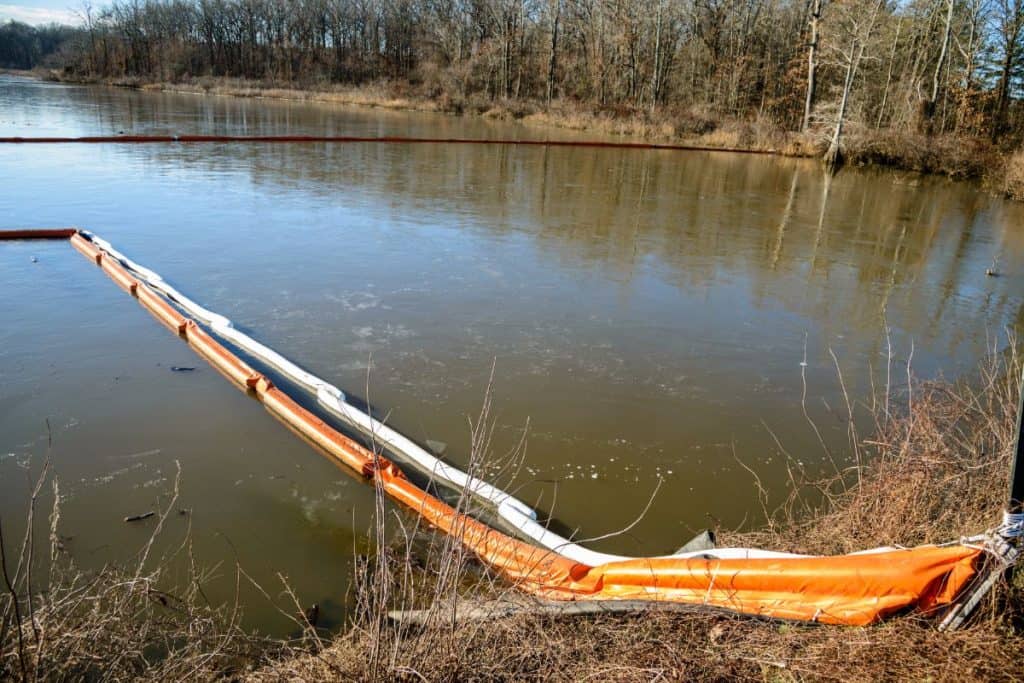The changing seasons bring about shifts in weather patterns, which can lead to increased risks of oil spills. Floods and storms, in particular, pose significant threats to waterways, causing potential harm to the environment and local communities. This article will explore the seasonal oil spill risks, discuss oil spill prevention measures, and delve into the use of oil absorbent booms as a protective measure.
Understanding Seasonal Oil Spill Risks
Oil spills are a major environmental concern, and their occurrence is often exacerbated during certain times of the year. Here’s why these seasonal shifts are important to consider:
The Impact of Weather on Oil Spills
Weather conditions play a crucial role in the likelihood and severity of oil spills. During the rainy season or when storms are frequent, the risk of oil spills increases. Heavy rains can lead to overflowing storage tanks, while strong winds and waves can cause accidents involving oil-carrying vessels. Understanding these seasonal patterns helps in planning and implementing effective prevention strategies.
Floods and Storms: A Double-Edged Sword
Floods and storms not only increase the risk of oil spills but also make it harder to manage them. Floodwaters can carry oil far from its source, spreading contamination over a wide area. Similarly, storms can damage infrastructure, such as pipelines and storage facilities, leading to leaks and spills. Being prepared for these seasonal challenges is crucial for minimizing environmental damage.

Oil Spill Prevention Measures
Prevention is always better than cure, and this holds true for oil spills as well. Here are some preventive measures that can help reduce the risk of spills during floods and storms:
Regular Maintenance and Inspections
Regular maintenance and inspections of oil storage facilities and transportation equipment are essential to prevent spills. By ensuring that tanks, pipelines, and vessels are in good condition, the likelihood of accidents can be significantly reduced. Scheduled inspections should include checking for any signs of wear and tear or potential weaknesses that could lead to leaks.
Implementing Safety Protocols
Safety protocols are vital for preventing oil spills. These include procedures for safe loading and unloading of oil, emergency response plans, and training for personnel involved in oil handling. Adhering to these protocols helps minimize human error, which is a common cause of oil spills.
Monitoring Weather Conditions
Keeping an eye on weather forecasts and being prepared for adverse conditions can help prevent oil spills. Companies should have contingency plans in place for severe weather events, including securing storage facilities and rerouting transportation as needed. This proactive approach can prevent many spills before they occur.
The Role of Oil Absorbent Booms in Spill Prevention
Oil absorbent booms are a crucial tool in the fight against oil spills. These floating barriers are designed to contain and absorb oil, preventing it from spreading and causing further damage. Here’s how they work and why they’re effective:
How Oil Absorbent Booms Work
Oil absorbent booms are made from materials that attract and absorb oil while repelling water. They are deployed on the water’s surface to create a barrier around the spill, preventing it from spreading. Once in place, the booms soak up the oil, making it easier to remove from the water.
Benefits of Using Oil Absorbent Booms
- Containment: Booms effectively contain oil, preventing it from spreading over large areas and causing more extensive environmental damage.
- Ease of Use: Booms are relatively easy to deploy and can be quickly placed around a spill to contain it.
- Versatility: They can be used in various water bodies, including rivers, lakes, and oceans, making them a versatile tool for spill response.
- Cost-Effective: Compared to other oil spill response methods, booms are a cost-effective option for containment and cleanup.
Best Practices for Deploying Booms
To maximize the effectiveness of oil absorbent booms, it’s important to follow best practices for their deployment:
- Pre-Positioning: Booms should be pre-positioned in areas prone to spills, allowing for quick deployment when needed.
- Regular Training: Personnel responsible for deploying booms should receive regular training to ensure they can respond quickly and effectively.
- Routine Inspections: Booms should be inspected regularly to ensure they are in good condition and ready for use.

Case Studies: Successful Oil Spill Prevention
Examining real-world examples of successful oil spill prevention can provide valuable insights into effective strategies and practices.
Case Study 1: The Gulf Coast Initiative
In the Gulf Coast, a collaborative effort between government agencies and private companies led to the development of a comprehensive oil spill prevention and response plan. This initiative included regular drills, the deployment of oil absorbent booms, and stringent safety protocols. As a result, the region has seen a significant reduction in oil spill incidents, even during hurricane season.
Case Study 2: Northern River Protection
In a northern region known for its harsh weather conditions, a community-led project focused on protecting local rivers from oil spills. By installing permanent booms at strategic locations and conducting regular maintenance checks, the project successfully minimized the impact of seasonal floods on oil spill risks.
Conclusion
Seasonal oil spill risks are a significant environmental concern, but with proper planning and preventive measures, their impact can be mitigated. By understanding the role of weather in oil spills, implementing effective prevention strategies, and utilizing tools like oil absorbent booms, we can better protect our waterways during floods and storms. Proactive efforts and collaboration are key to safeguarding our environment from the devastating effects of oil spills.
Take Action: Shop at Absorbents Online for Your Spill Prevention Needs!
Protecting our waterways is a shared responsibility, and having the right tools is essential for effective oil spill prevention. Visit https://www.absorbentsonline.com to explore a wide range of oil absorbent booms and other spill response products. Equip yourself with the best solutions to safeguard the environment and ensure a cleaner, safer future for our communities. Don’t wait for the next storm—shop now and be prepared!